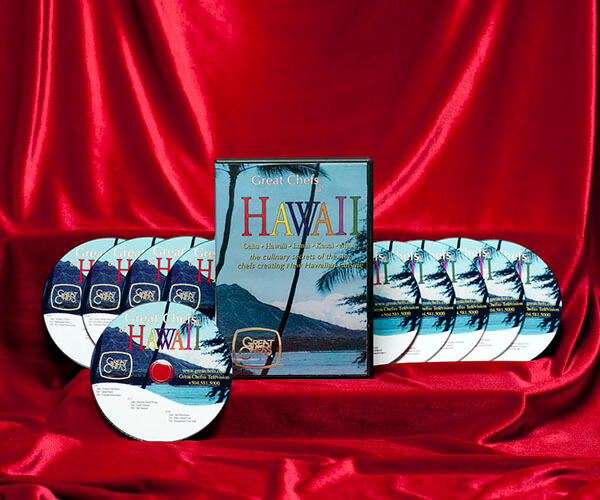
Schmoozing his way through Central Park. Gray-lambskin leather jacket and gray cashmere hoodie by Dolce & Gabbana, $4,950 and $2,245; dolcegabbana.com. Collins pants in worn iron by J Brand, $258; jbrandjeans.com. Calf-leather Heider sneakers by Bally, $495; bally.com
In the mornings, chef Eric Ripert spends about an hour in his meditation room in his apartment on the Upper East Side. He describes it as a sparsely furnished, simple, windowless spot where he can sit and think. It’s his own space, and even the cat, he says, knows not to wander in. “I don’t know how he knows,” says Ripert in his heavy French accent, “but he knows. I never told him.” This hour of contemplation is how Ripert starts a day that might end, as one did recently, with the credit-card-processing system breaking down in his restaurant, Le Bernardin, one of the most lauded, and expensive, in the world. When that happened, parties with checks in the thousands were left sitting as waiters rushed in a professional, silent, definitely anxious way to handle payments using a backup machine downstairs. But calm prevailed, and it radiated from Ripert. As one of his sommeliers, Juan Gargano, puts it, “He is the sensei master. He is truly tranquil. I’ve worked for other celebrity chefs, and he is completely different.”
Most chefs with a media presence spend their time multiplying outlets, turning themselves into brands that can span everything from hamburger joints to cookware. Wolfgang Puck has more than 20 restaurants, and that’s just in the fine dining group. Danny Meyer is running a dozen establishments and more than 60 Shake Shacks, which are expected to do more than $160 million in sales in 2015. Ripert is an exception. Although he appears regularly in the media and runs a small restaurant in the Cayman Islands, called Blue by Eric Ripert, he is, for the most part, local and focused. And he’s surely leaving millions of dollars on the table. “I’ve reached my level of contentment career-wise,” he says. “I’m very happy not to expand to other restaurants.” Last fall, he did open a wine bar, just across the courtyard from Le Bernardin and connected through the basement. If it magnifies Ripert’s fame, it will be only among the serious eaters who follow him closely. The Aldo Sohm Wine Bar is named after the wine director at Le Bernardin.

“A long time ago,” Ripert says, “we decided to have only one restaurant. Five or six years ago, I decided my journey would be in three parts. It would be one-third for myself, one-third for my family, and one-third for my business.” (Ripert is married and has an 11-year-old son.)
“It would be impossible to run two Le Bernardins and have both equally good,” Sohm says. “The weak spot in any restaurant is consistency. We have a lot of regular customers. We cannot be one day great and one day OK.”
Ripert, 50, is of average height, but he seems much bigger. Maybe it’s his hair, which is thick and silver, or the large scale of his face and features. He has light green eyes, a permanent tan, and a recurring smile that suggests he’s skeptical but probably going to let it all slide. His looks have made him a natural on television. He’s just finished shooting the third season of Avec Eric, his show on the Cooking Channel, and he appears constantly on shows such as Top Chef or his friend Anthony Bourdain’s Parts Unknown on CNN.

Ripert was born in Antibes, in southeastern France, and lived for a time in Andorra, the tiny nation in the Pyrenees squeezed between Spain and France. He speaks French, English, Spanish, and Catalan. His first restaurant job was at Le Tour d’Argent in Paris. He went from there to work for Joël Robuchon at Jamin in the same city, and in 1989 he moved to Washington to work for Jean-Louis Palladin. In 1991 he ended up at Le Bernardin, assisting the co-founders, Maguy and Gilbert Le Coze. When Gilbert died of a heart attack in 1994, Ripert took over the kitchen. The restaurant has never lost its four-star rating from the New York Times, one of just a handful of restaurants so designated, and it’s the place that’s held that rank the longest. It’s received three Michelin stars, the highest possible, since the ranking system came to New York in 2005.
After meditation each day, at about 10 a.m., Ripert walks over to Central Park, no matter the weather, and winds his way south and west. He walks with a slow, leonine amble and takes different routes with no real plan, though he often passes a guy who plays hard bop saxophone. “Usually,” Ripert says, “I stop and listen, and I give him a dollar or two. He is quite good. He plays at the Cotton Club, too, you know.” Ripert comes out on Seventh Avenue and walks the six blocks to his office, which is in an apartment building across the street from the restaurant.
His office is a simple one-bedroom with a few desks and a couch in it. He works there with his assistant, Maggie Jennings, and Cathy Sheary, his director of strategic partnerships, handling media requests and consulting. The walls are covered with posters of the Buddha and handwritten mantras, which Ripert recites easily: “I purify my body. …” Most of the images are “medicine Buddhas,” and the largest is Tibetan.

Ripert says he found Buddhism in the Paris Charles de Gaulle Airport, when he was first on his way to the U.S. to work for Palladin. “I was about to buy a book for the flight, some fantasy novel,” he says. “And then, for some reason, I don’t know why, I grabbed the one next to it. It was a book about Tibet. I read the Dalai Lama’s speech when he received the Nobel prize. I was absolutely amazed.” Ripert has practiced Buddhism with increasing involvement ever since, with particular emphasis on the Tibetan strain. He considers the Dalai Lama his teacher. Five years ago, he cooked for him at Le Bernardin for a fundraiser for Tibetan immigrants.
Ripert has traveled widely in Asia, including Bhutan, Cambodia, Japan, Korea, and Vietnam. Buddhism has come to inform not only his personal life and management style, but also his food, which is almost aggressively minimalistic, yet wide-ranging. Pea shoots, to take one small example, are ever present in his recipes, though they’re rare in U.S. grocery stores. They’re common in Asia, he explains. When I ask him where to find them here, he suggests Chinatown. More broadly, the fish is cooked with a precision and lightness of touch reminiscent of Japanese arts such as calligraphy or, more obviously, sushi. His salmon is cooked on only one side, and barely at that. The fish isn’t so much served on the plate as framed by it.
A collection of 25 or so postcards with Buddhist imagery covers the wall behind his desk. There is no computer. Ripert’s assistants answer his e-mail, but most of his work is done in person or by telephone. He isn’t a technophobe; his iPhone is usually in his hand or nearby.
“Computers are supposed to free you,” he says, “but people are more like slaves to the computer. I feel freer without it. I can think about other things.” He looks over at his assistant, consigned to type for him. “I’m sorry for Maggie.”
There are a few coffee-table books, including The French Laundry Cookbook and Michael and Rick Mast on chocolate. Ripert is a connoisseur of dessert and once went hunting cocoa beans in Peru with Bourdain. There’s also a signed poster from Roger Waters’s Wall tour. Waters introduced himself to Ripert at a party, and they became friends. A few years ago, Ripert followed Waters on tour across North America and Europe. He’s got a zillion photos of the trip on his iPhone.

As it gets closer to lunch, Ripert heads across the street to the offices beneath the restaurant, where many of the 150 or so employees work, answering calls and negotiating with suppliers. He catches up with co-owner Maguy Le Coze. In white jeans and a white blouse, Le Coze has a black bob and a 10-acre smile; food critic Gael Greene calls her a “knockout in bangs.” When Le Coze started in the business, running a nightclub in her Brittany hometown in the early ’70s, she kept the joint full by dancing on the bar.
“I come every morning,” Ripert says, grabbing a pristine white double-breasted jacket from a closet, with his name and the name of the restaurant on it in blue cursive. “I catch up with David”—David Mancini, the managing director—“and Maguy. It’s good for me to see everyone. I can judge the mood.”
“He feels into people, what is their mindset,” Sohm says. “He’s sensitive. He’s very engaged, and when he looks to bring people in, he looks for that, too.” Sohm says it was Ripert’s idea to name the bar after him. “ ‘We want to make sure you stay,’ he told me. He cares for people.”
Shrugging on the white jacket at Le Bernardin, Ripert suddenly turns into Chef, which is how he’s addressed by pretty much everyone at the restaurant. He heads through corridors and up a service elevator to another warren that leads to the kitchen.
It’s a cacophony back there, silverware and clogs and an ice crusher; the enormous white plates from Bernardaud, a French porcelain manufacturer, getting stacked; and about every 10 seconds, a “Hi, Chef.” People are working in hallways and corners and behind the frosted-glass windows of fridges the size of walk-in closets. One fridge holds leftovers from yesterday’s meals; they go to City Harvest, which delivers food to the needy. Ripert is the vice chairman of the board.
Ripert starts the real work of running a restaurant with the sauces. “It is the most important part,” he says. In the heart of the kitchen, Vincent Robinson, who’s been saucier at Le Bernardin since 1986, stands patiently by 20 or so square tins containing, among others, vinaigrettes, a marinière, a basquaise, a lemon grass consommé, and an emulsion of citrus and miso. Waiting on a plate are about a dozen cubes of Swiss cheese. Ripert takes one before tasting the sauces. “This way, I know what I am tasting,” he says. “The Swiss cheese is always the same, but if it feels salty or bland, I know my palate is off.”


He grabs a handful of starch spoons and dips a fresh one into each sauce. It’s things like tasting sauces, Ripert says, that keep him from expanding. Obviously, a chef in New York cannot taste a sauce in Las Vegas. “You have to be close to your team,” he says. “It is the only way to correct small details.” As for the sauces, they’re mostly fine, except for the almonds in an emulsion that also includes pistachios, chardonnay, and shallots to go on the sautéed Dover sole. The almonds were toasted too long, he explains, making the sauce bitter. There’s also a broth that isn’t thick enough, but that’s an easy fix. It just needs to be reduced further.
“There’s an intensity when I’m around,” Ripert says. “When you see the boss, you see the boss. I don’t leave them shaking, but you put love into the food. It’s a bit la-la-land, but I believe in it.”
After the sauces, he goes out into the dining room and spins through the lunch crowd, stopping at the regulars’ tables. Le Bernardin, recently remodeled, is a long rectangle in a modern style, with spiraling white blinds and a geometrically patterned ceiling of blond wood. There are about 35 entrees on the main menu, all seafood. (One can order meat, such as duck or filet mignon, by request. You can even order french fries, as one little girl did, and you’ll get them. But don’t.) The menu is divided into three columns, “Almost Raw,” “Barely Cooked,” and, at the most intense, “Lightly Cooked.”
It can feel profane to conflate religion with wildly expensive food in Midtown Manhattan, but if one sheds one’s cynicism, the alignment starts to feel more natural. In the Le Bernardin Cookbook, Ripert stops to consider the carrot. “I like to feel what I do,” he writes. “When I cook a carrot, I become that carrot. If I don’t feel the food, I will only be a great technician, never a great chef.”
The fish at his restaurant feels also like more than a fish. It is, after all, the symbol of so much. It isn’t random that, in the early days of Christianity, the fish was the mark by which one believer could recognize another. The fish is—or was, before factory trawlers scraped the oceans of life—the symbol for plenty. Man does nothing, and fish exist, and when he wanted one, the fisherman needed only to drop a line over the side. When Christ came back to life, he was hungry and asked if there was anything to eat. He was served broiled fish.

To be truly present sometimes means to hear the ring of the monk’s prayer bell with clarity of mind and openness of heart, but sometimes it means ordering double martinis. In early July, Ripert finds a table at the Standard in New York in the shadow of the High Line. He orders his martinis dirty, with “good gin,” and stirred. He thinks shaking them messes up the flavor, and he doesn’t take them supercold. “Then,” he says, “you cannot taste them.” Our drinks arrive looking beautiful in Champagne coupes, each holding a little more than 5 ounces.
Ripert is a friend of André Balazs, the superhotelier who runs the Standard and the Chateau Marmont in Los Angeles, which Ripert says is one of his favorite hotels. Whenever he goes there, he says, he orders the pasta Bolognese. (When the huevos rancheros were removed from the breakfast menu, he made a call to the owner, and they were restored.) At the Standard, he chooses cheese and charcuterie to go with the martinis and a chicken salad, which he devours until the plate sparkles. It’s the perfect setting for a second round of drinks, and when the waiter delivers them, he tells us he’s jealous.
Afterward, we return by car to Le Bernardin. It’s a long ride, broken up by a call from the writer and gourmet Jay McInerney, who is Ripert’s friend. They like to have throw-downs on questions such as whether there’s a better wine to pair with fish than Bordeaux. “He loves Bordeaux with everything,” Sohm says of Ripert. “It’s a bit ironic.” He runs a fish restaurant, and Bordeaux is a red wine. White wine, as even the kid at the Red Lobster will tell you, is meant for fish. “Dover sole with Bordeaux,” Sohm says, grinning at the madness of the choice. “It’s not exactly the perfect pair.”
Ripert gets back to the office in time for the daily “creative meeting,” in which the executive chef, the sous-chefs, and the Aldo Sohm chef plan dishes. The tasting room is a conference space somewhere in the back of the office. One wall is lined with cookbooks. The other contains a whiteboard with the names of produce in season.

There are six or seven cooks in the room, all of them shuffling and arranging, when suddenly Ripert says, “So guys, we are doing this tasting because we tried some sauce for the lobster with foie gras, but I didn’t feel it was ready.” I wonder why he’s explaining to them what he’s currently doing, and it occurs to me that maybe the alcohol is dissolving into his system, and he might have forgotten that I don’t work with a camera, but I’m not sure. If there’s alarm that the boss is pickled, the cooks don’t reveal it.
As always, it’s all about the sauces. The emulsion for the lobster and foie gras dish is served up, and Ripert dips in a starch spoon and has a taste, looking around the room as he cogitates. Finally, he says he finds it “overpowering.” It must not burden the lobster, he says. Then it’s gone, and a pâté dish slides to the fore. It’s presented as a possibility for the wine bar, with the pâté and the bread arranged on the tray in tidy interlocking triangles. It seems workable but not finished. Perhaps the doubled triangles are too much geometry for one dish? The cook agrees to play around with the presentation. Next are the boxes for customers who can’t finish their petits fours. How many petits fours do people actually want to carry around with them? Four? The meeting goes on, one detail after another. No matter seems too small.
Upstairs, the early dinner reservations are beginning to drift in. The restaurant is crowded most nights, and many of the guests have traveled thousands of miles to be there. The orders from the waiters arrive in the kitchen on paper—they don’t punch screens at Le Bernardin—and are attached in a line on the stainless-steel serving station under the executive chef’s watch. Then the plates go out, spare, perfected arguments for one man’s approach to life.










